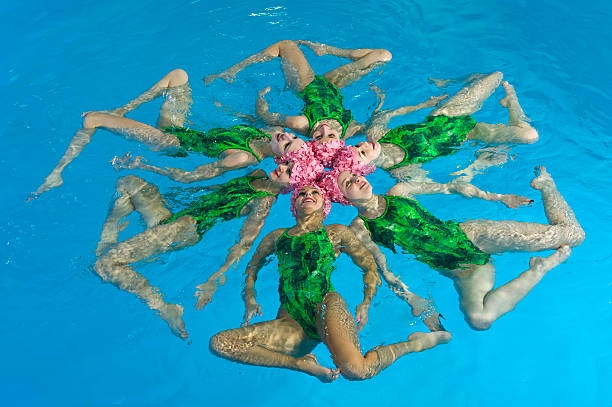Synchronized Swimming: The Ballet of Water Sports
Synchronized swimming, once seen as a mere spectacle, has evolved over the years into a respected and highly competitive sport. This fusion of swimming, dance, and gymnastics offers a unique blend of strength, flexibility, and timing, requiring athletes to harmoniously execute intricate movements underwater. This article dives into the captivating world of synchronized swimming, exploring its humble beginnings, current trends, and the athleticism required to excel in this demanding discipline.

The Origins of Synchronized Swimming
Synchronized swimming, initially known as “water ballet,” traces its roots back to the late 19th and early 20th centuries. The sport started as a form of entertainment in water shows and gradually gained recognition as a competitive discipline. The first unofficial synchronized swimming competition took place in 1891 in Berlin, Germany. The sport made its Olympic debut for women at the 1984 Los Angeles Games, and it has been a permanent fixture since.
The Evolution and Current Trends
Over the years, the sport has witnessed an evolution in complexity and technique. The current trend involves incorporating more challenging acrobatic moves and innovative choreography to captivate audiences and impress judges. From a technical standpoint, swimmers are now focusing more on developing their strength and flexibility to execute these complex maneuvers.
The Art of Synchronized Swimming
Synchronized swimming is not just about perfectly timed movements; it’s an art that requires precision, strength, and endurance. Athletes must stay afloat without touching the pool bottom, all while executing intricate routines, often upside down. The sport demands excellent breath control, as swimmers spend a significant amount of time underwater. The athletes also need to possess a great sense of rhythm and timing to synchronize their movements with their teammates and the music.
Challenges and Real-World Applications
Despite its aesthetic appeal, synchronized swimming is one of the most physically demanding sports. Athletes often face challenges like muscle fatigue, breath control issues, and maintaining synchronization. However, the skills and discipline acquired from this sport can translate into real-world applications. For instance, the teamwork and synchronization required in this sport can foster effective communication and cooperation skills.
Synchronized Swimming: A Sport of Grace and Grit
In conclusion, synchronized swimming is a captivating discipline that combines grace, athleticism, and teamwork. It is a sport that demands as much grit as it does artistry. While it continues to evolve, one thing remains unchanged: synchronized swimming is a testament to the strength, agility, and resilience of its athletes. It truly is the ballet of water sports.




